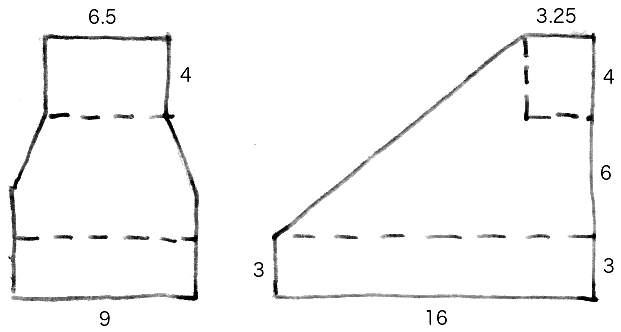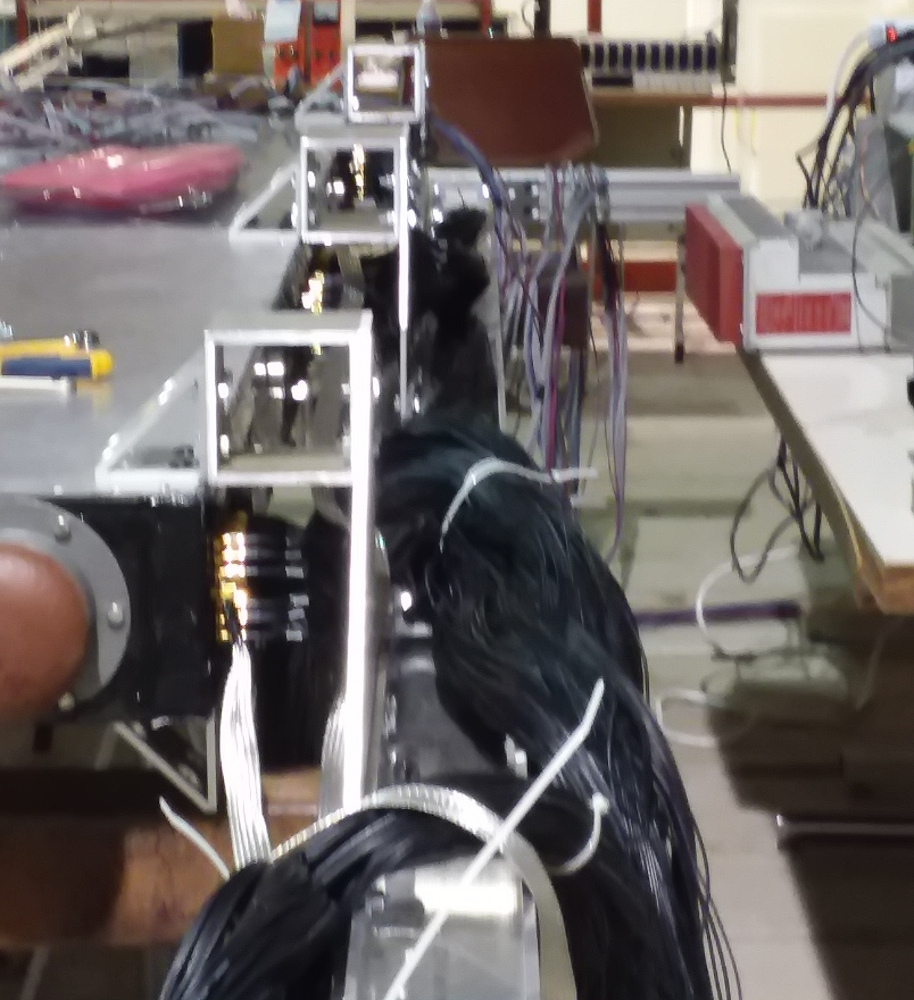| Station 1 lifted straight up.
Before this, Sho re-established a DAQ, and we took an overnight cosmics run. | 
| ||||
| Down the hall | 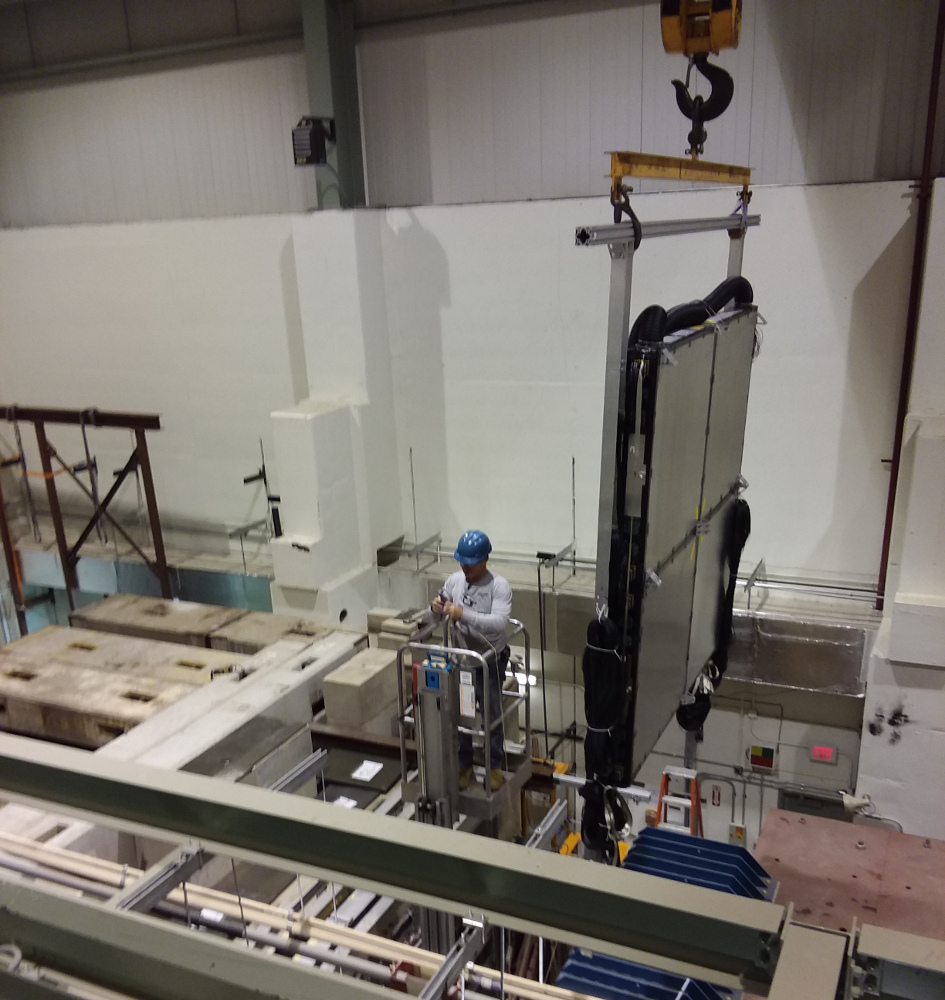
| ||||
| On the platform | 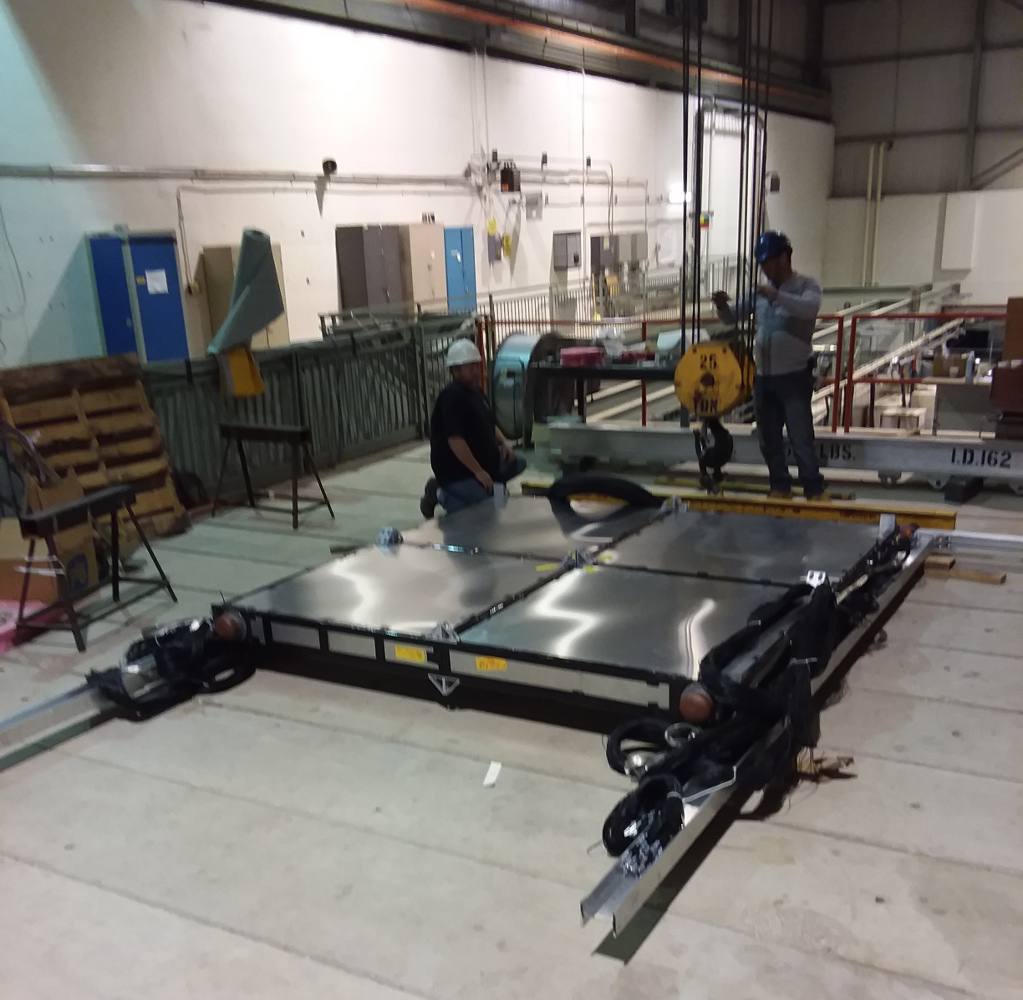
| ||||
| Up on sawhorses, downstream side facing up. We reconnected power, bias and optical pulser systems. | 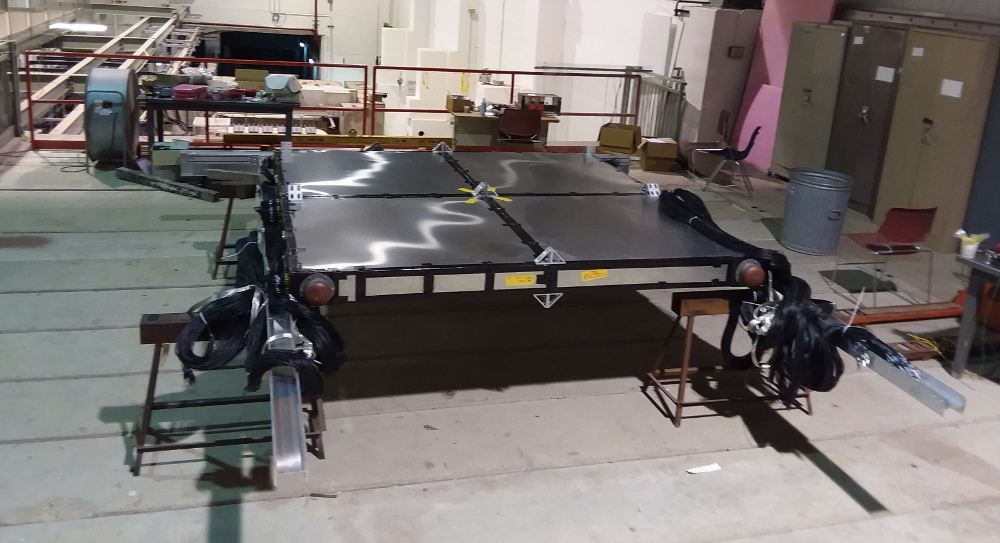
| ||||
| Rick strongly suggested we try to modify the mounting such that
repairs can be done in situ, without having to crane the detector out. This would potentially allow servicing during weekly 8-hour accesses, rather than
once a year during long shutdowns.
I proposed the modification sketched here: Currently, the brackets which connect the detectors to the vertical posts are in the front, preventing us from opening up the detector on the accessible upstream side. There are brackets in the back (not drawn), but these are not used for mounting. If we instead use the brackets in the back, and in addition put in a spacer, then the front becomes unobstructed, and you can wrap black tape around the front corner ater repairs. Sturdy plates connect back to the bolt holes in the vertical posts. The detector envelope stays the same, except that the posts are moved out 4.25". The center-of-mass also stays the same. | 
| ||||
| By the end of Friday, I had scrounged together enough metal to make the new brackets, but they still needed to be cut. On Saturday, I found a local Makerspace
The spacer blocks are cut from 4×4 square Al tubing, 1/2" wall (3.25" and 6.5"). Plates are 0.25" Al. | 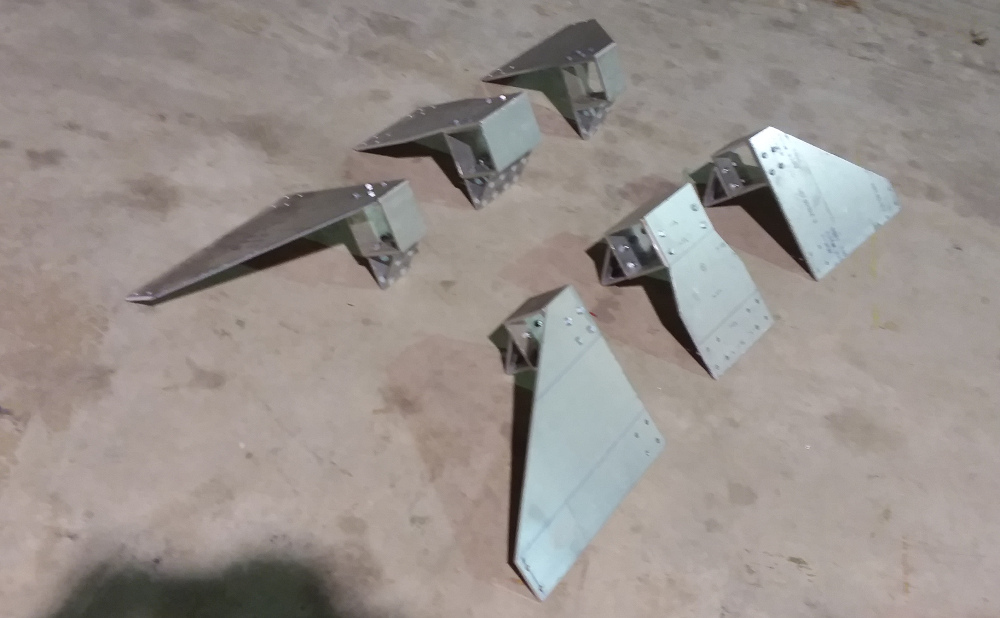
This shows the bracket on the top right corner. Note the front face (down) is now clear.
| | 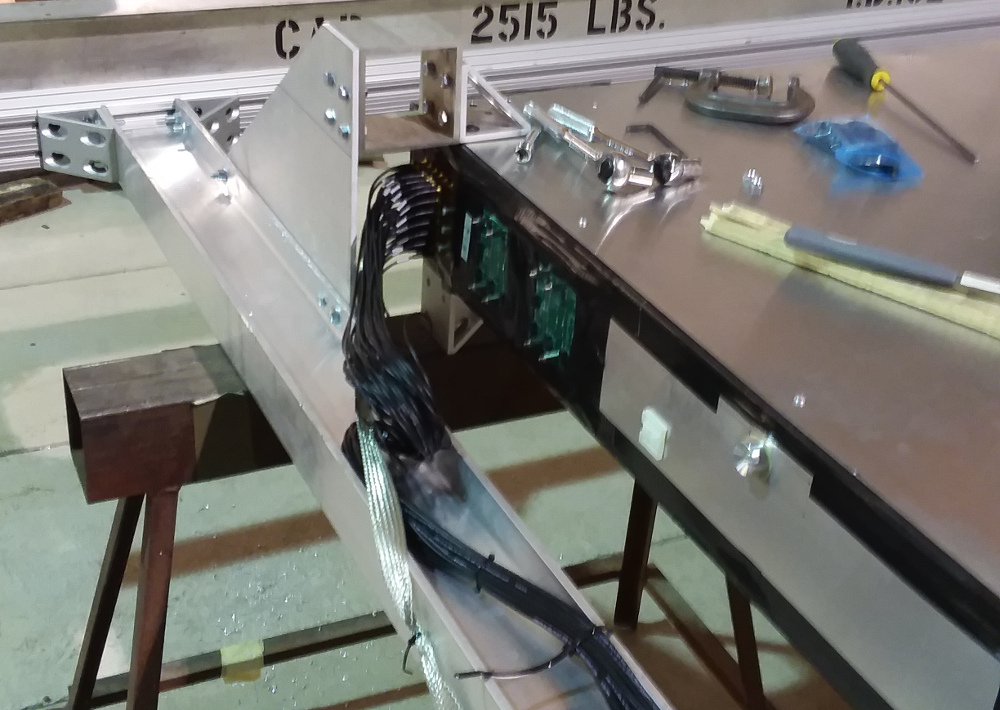
Meanwhile, Sho fixed one channel after another.
| | 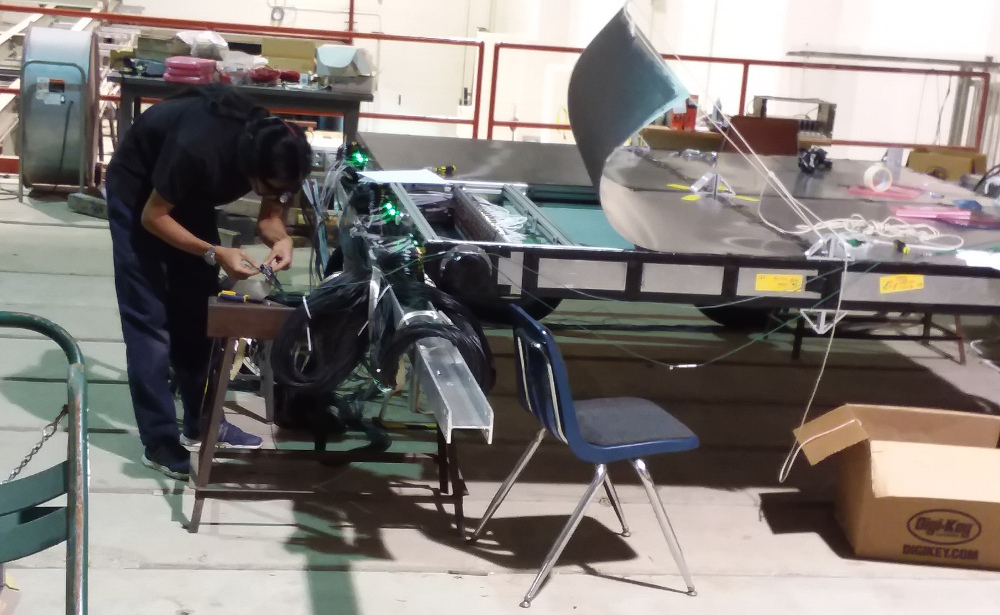
|
Hubert van Hecke Last modified: Fri Nov 30 20:24:27 MST 2018
